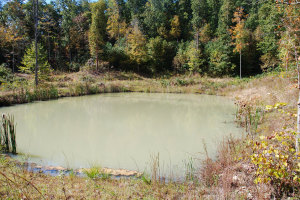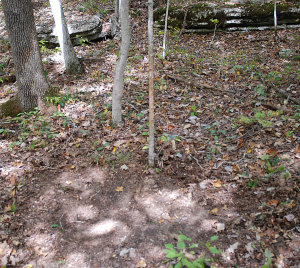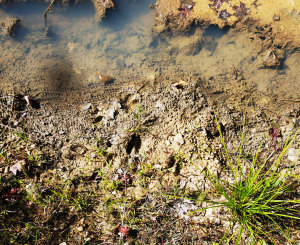Editor’s note: This is the second part of a two-part series “Scouting for Whitetails.”
By Chris Erwin

Last week, we talked about getting prepared by locating deer that is using the property you are hunting. By using a map you can figure out where the deer is bedding, feeding, staging, watering and how they are getting from one location to the other. By noting the wind currents both early and late you can map a path to and from the areas where you want to build a blind or set up a tree stand.
As I walk the area where I plan to hunt, I note all the places where I can see tracts leading to the pond, and to the bedding areas. I also make a note of where the deer enters the woods. This leads me to the feeding areas (a large Oak Grove). With a little investigation, I find an old scrape line and one place where a buck is already rubbing a sapling.
This place has it all: Water that is secluded, thick cover close by and a good food source. There are multiple trails all leading to and from the water, and I can tell that the doe family is walking right out in the open. However, I see a lone set of tracks coming right out of a thicket, which leads me to believe a buck is using that trail.

Armed with all of this information, it’s time to think about where I want to have a tree stand. While I know the deer habits will change as the deer begins to rut they will most likely still use the pond. I want to have one stand where I can see all the areas where the deer are coming out of the woods. Wind is also important. I want to make sure I’m not down wind but can still see the whole area. This will be my morning stand. This is because it appears to me that the deer are coming out of the woods, going to the pond and then slipping down into the thicket to bed down.
I want to have a second tree stand for the evening located where I can see the staging area just before they come out of the thicket and head back to the Oak Grove. I notice that the wind seems to be out of the east in the morning and out of the west in the evening. I believe this is due to how the hills lie around the pond.
If I were bow hunting, I would try to be in a tree in the staging area. I will be gun hunting so a 60 or 70-yard shot in this open area shouldn’t be a problem.
Once you find a place like this, you don’t want to over scout it. If you jump the deer or leave behind a lot of scent, you can shoot yourself in the foot by altering how the deer is using the property.

While I can drive a four wheeler all the way to the pond, I won’t be doing that. Instead, I will be parking the wheeler near the other side by the ridgeline and walking in from an angle where I believe I won’t be crossing any place where it might leave my scent in their path.
I will also be using “a doe in heat scent” on my boots, and wearing scent free clothes. I have actually had an unexpected buck track me right to my tree stand in years past!
While you’re waiting in your stand, you want to try to watch all directions without making any more movement than possible. Deer are color blind but they can easily spot movement, and if they get the slightest hint that something isn’t right you will get to watch that big old white tail as they bound away from you.



Be the first to comment